How to change the seal on a washing machine?
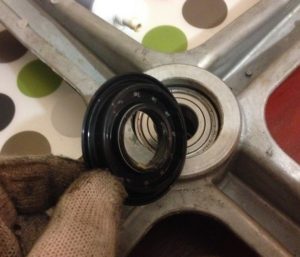 When you hear a crunching and humming sound when the drum rotates, it is most likely time to reinstall the bearings, and along with them, replace the seal in the washing machine. Such a breakdown is considered quite complex, but if you understand the problem, you can fix it yourself at home. Let's figure out how to get to the node and what points to pay special attention to.
When you hear a crunching and humming sound when the drum rotates, it is most likely time to reinstall the bearings, and along with them, replace the seal in the washing machine. Such a breakdown is considered quite complex, but if you understand the problem, you can fix it yourself at home. Let's figure out how to get to the node and what points to pay special attention to.
Part replacement procedure
If during washing or spinning the machine makes noise like a jet engine, you hear a strong grinding noise, most likely the problem is worn out bearings. So, turning the drum by hand, you can hear an uncharacteristic rumble. To repair the unit, you will have to almost completely disassemble the washing machine.
Beginners who do not know which side to approach the machine from, need to strictly follow the instructions for action and photograph each step of the work. Be sure to sketch out the wiring diagram, contacts, etc.
When reinstalling bearings, it is necessary to replace the seal in the washing machine.
So, to change the o-ring and bearings, you need to:
- remove the “top” of the machine by unscrewing the bolts holding the cover;
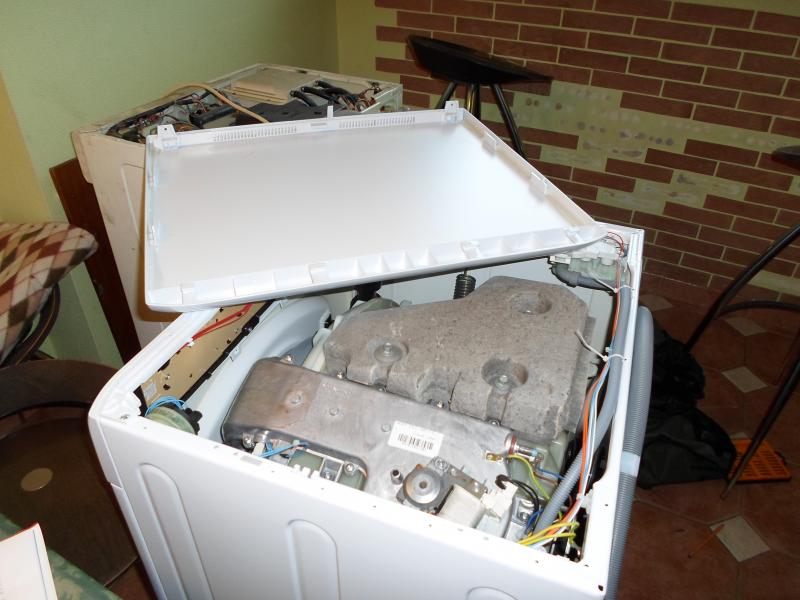
- remove the back and front panels of the washing machine, also removing the screws securing the walls;
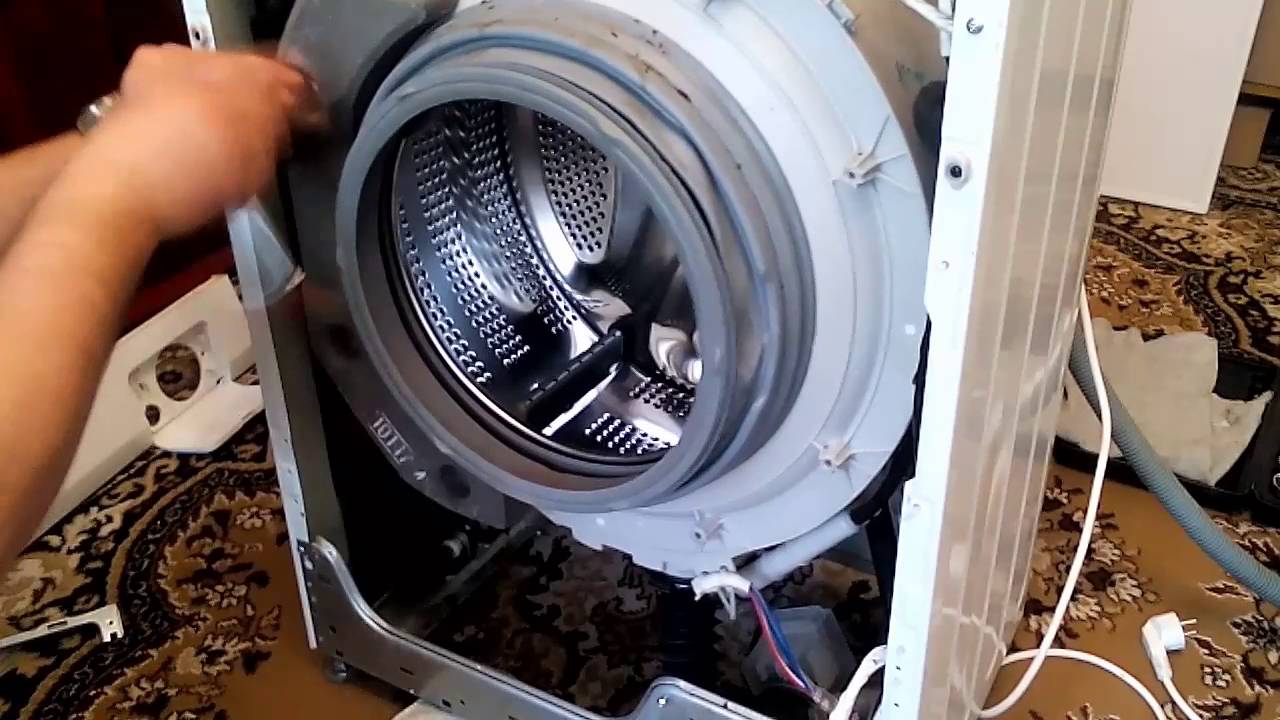
- remove the counterweight blocks from the body, disconnect the shock absorber springs;
- remove elements from the machine that will interfere with the removal of the tank. You should take out the dispenser, heating element, motor, disconnect the drain pipe from the tank, remove the wiring (after photographing the connection diagram). For example, on Indesit machines with a commutator engine, you will have to remove the belt and disconnect the pulley;

- remove the tank.Some models of washing machines, for example, LG, Electrolux, Samsung, have a collapsible tank, and dividing it in half is not difficult. Machines from the Ariston, Beko, Zanussi, and Whirlpool brands have a monolithic container, and in order to get to the bearing assembly, you will have to cut the structure into two parts.
After this you will have access to the bearings. Before you begin replacing components, be sure to inspect the shaft and crosspiece. If the washing machine has been operating in emergency mode for a long time, they may have defects: chips and cracks. In this case, even when installing a new oil seal, water will penetrate inside the unit, and the repair will have to be repeated in a few months.
If upon inspection of the crosspiece and shaft their damage is revealed, the elements will also have to be replaced.
When everything is in order, you can begin to remove the bearings. The metal rings are carefully knocked out of their seats using a hammer and a blunt chisel. The oil seal is pulled out of the “socket” using a slotted screwdriver.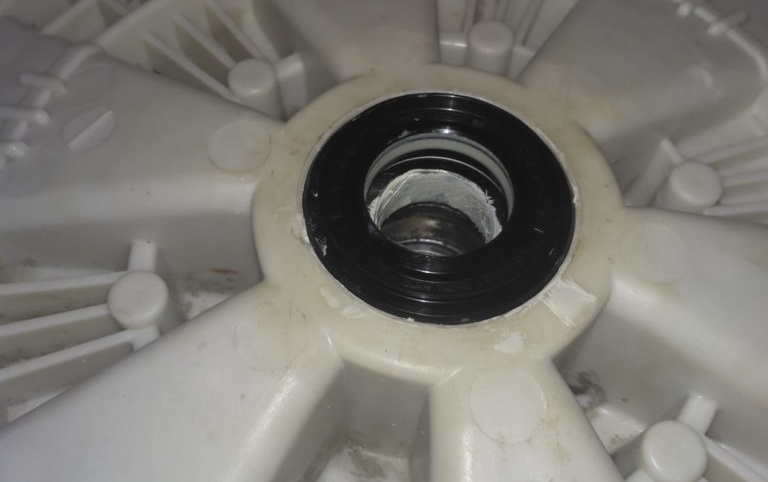
Replacement parts must be exactly suitable for your particular washing machine model. Therefore, before purchasing, be sure to understand the dimensions of the components. Before installing new bearings and oil seals, thoroughly clean the seating “socket” of dirt, wear, and rust, and treat the parts and fastening points with a special lubricant.
Next, the steps are repeated in reverse order. Lubricated bearings are pressed into the “socket”, and the oil seal is put in place. After the tank halves are securely fastened, the container is placed in the machine. Then the previously removed elements are connected to the tank: wiring, pipes, a heating element and engine are attached inside the machine, a pulley is screwed on, a belt is tightened, counterweights are fixed.After assembling the washing machine body, you need to run a test wash and check the operation of the equipment.
Features of adding lubricant
When changing the oil seal and bearings with your own hands, it is important not to forget about lubrication. Processing parts before installation is an integral stage of repair. In your work you need to use professional lubricants approved by the manufacturers of automatic machines.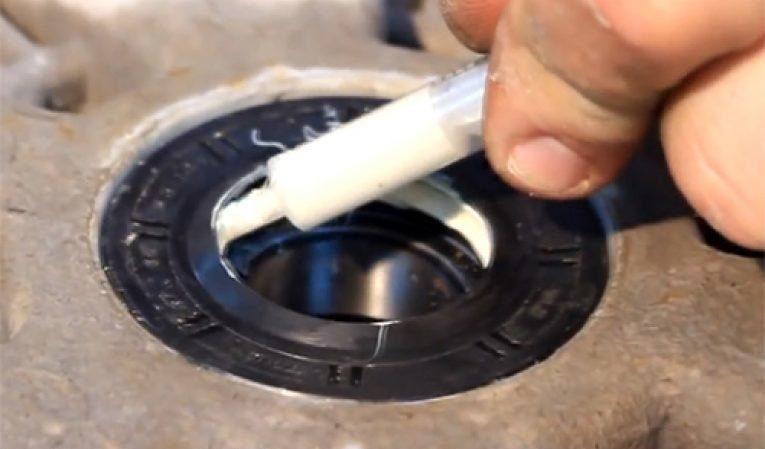
The bearings are generously lubricated before pressing, the oil seal is processed only from the outside. Since professional products are quite expensive, home craftsmen try to use automotive lubricants when repairing washing machines. Saving in this way, they do not think that “non-core” compositions do not have all the necessary properties and are quickly washed away with powder and water. Therefore, after a year or two, the bearings will again become unusable and will need to be replaced.
What lubricant should I use?
Before repairs, you should study what composition washing machine manufacturers recommend treating the oil seal and bearings. The lubricant used when servicing washing machines should be:
- moisture resistant. Since the shaft and sealing rubber come into contact with liquid, a water-repellent substance is necessary. The worse the product is washed out with water, the longer the bearings will last;
- heat resistant. The substance must not lose its properties even in extreme conditions, with constant temperature changes;
- safe for rubber. The composition should not contain aggressive components that can harm the oil seal;
- viscous. The thick product will not leak out during operation of the equipment.
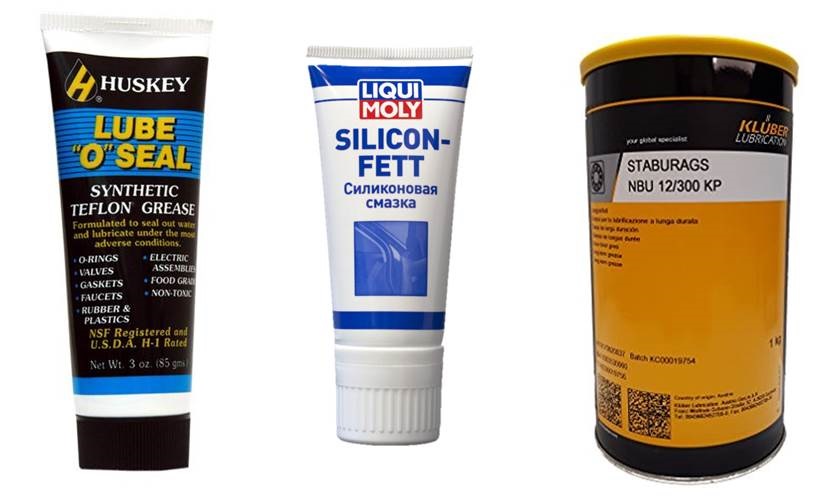
Thus, Anderol lubricant, produced directly by the machine manufacturer, is recommended for Indesit machines.For washing machines from Bosch, Siemens, LG and others, you can use STABURAGS NBU 12 - this is a professional composition for treating bearings of washing units, ensuring protection of parts from wear.
To process oil seals and bearings, craftsmen also recommend using LIQUI MOLY “Silicon-Fett” silicone lubricant, which can withstand temperature changes from -40°C to +200°C. The composition is thick and easy to apply. Another option is Huskey Lube-O-Seal PTFE Grease, which won't wash off even with running water. The lubricant will protect the bearings for a long time, is heat-resistant, and retains its properties at both -18°C and +117°C.
What happens to the seal?
The oil seal is a rubber seal that protects bearings from the harmful effects of moisture. While the machine is operating, the shaft constantly rubs against the inside of the gasket. From such contact, the seal wears out. To prevent this, it is important to lubricate the part.
But even professional lubricant will wash out after years of contact with soapy water. The rubber will begin to dry out, crack, and moisture will seep into the bearings. And then you will have to change the components.
Interesting:
Reader comments
- Share your opinion - leave a comment
Categories
Washing machine repair


For buyers

For users

Dishwasher

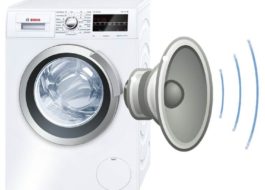
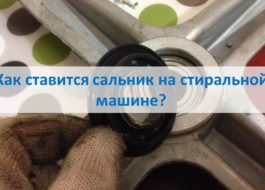

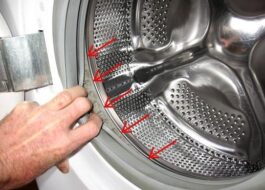
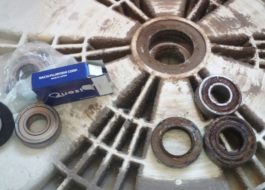
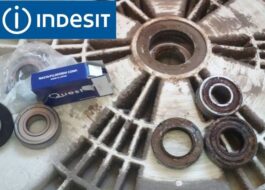










Add a comment